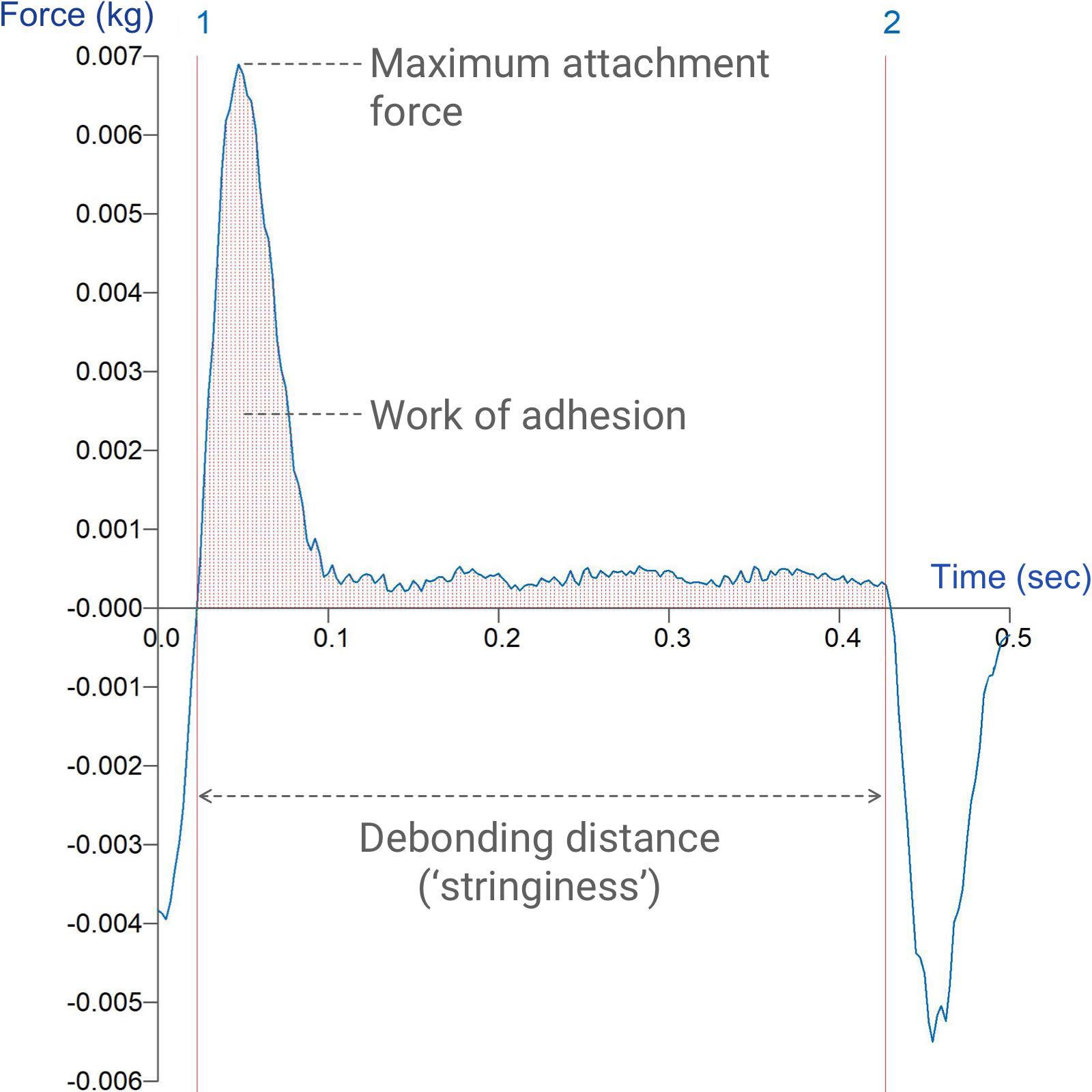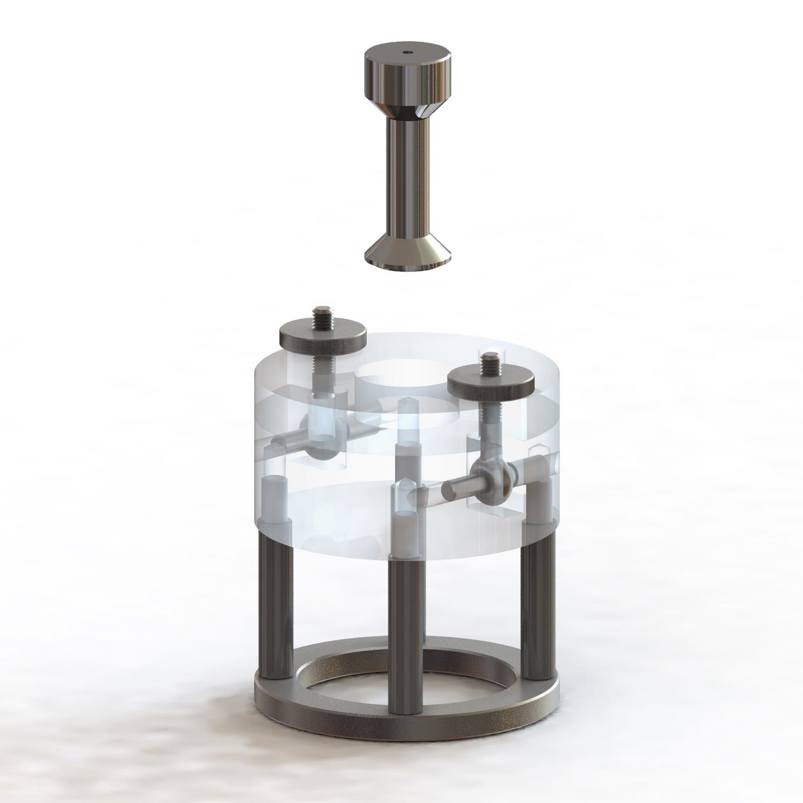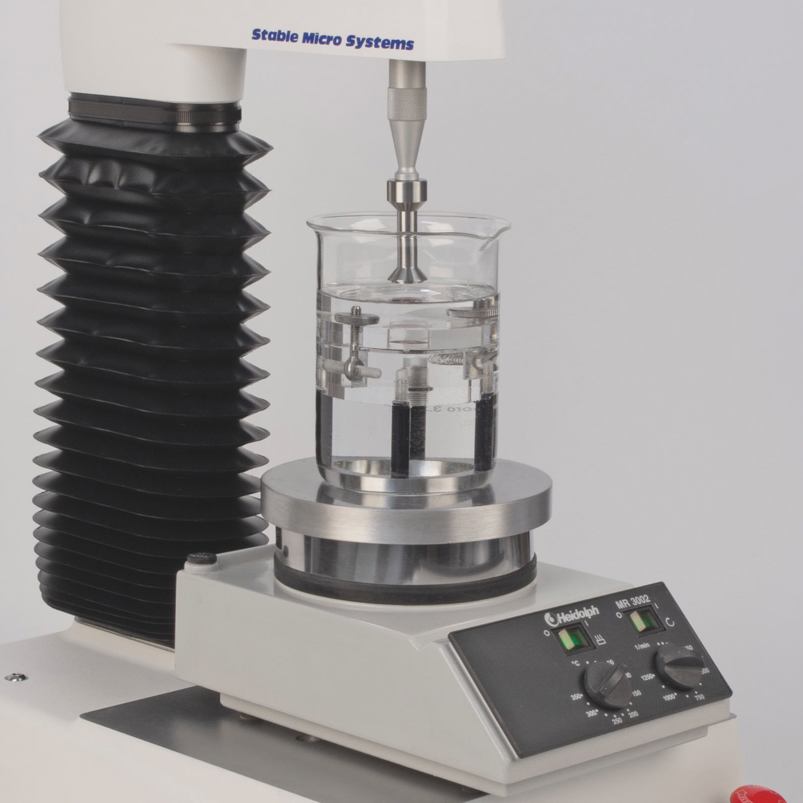Product overview
Mucoadhesion is the process by which a drug delivery device is designed to stick to a part of the gut or other mucosae, thus delivering drug to a precise site in the body for an extended period. This gives more effective treatment of some diseases and can also protect drugs from some of the harsh conditions in the body. The determination of the adhesive properties of pharmaceutical dosage forms is important in their development.
The Texture Analyser can measure bioadhesion bond strength when fitted with the Mucoadhesion Test Rig. This rig was developed at Strathclyde University in the 90’s to measure how a polymeric device adheres to a mucosal surface and offers a number of advantages over systems previously used for the assessment of mucoadhesion. A particular advantage is the ability to test tissue samples in the conditions in which they are normally found; where conditions close to those found in vivo are required, the rig provides the ability to set-up the tissue samples in a vessel of temperature regulated gastric fluid and lower a probe with the attached solid or semi-solid dosage form onto the tissue. The test is also known as the Tobyn method (after its inventor) and allows examination of mucoadhesion bonding to tissue, within an environment which resembles the conditions that are prevalent, in the region of the gastrointestinal tract from which it came. Tests of solid dosage forms, semi-solids such as gels and even systems which solidify on contact with the target organ can be performed.
An alternative method is now available which enables attachment of gels to a probe. The Gel Mucoadhesion Probe, consists of an inverted cone shape at its end which has machined concentric grooves. These grooves encourage the attachment of a controlled volume of hydrogel sample to the probe surface area.
How does the Mucoadhesion Rig work?
Typical graph

Ideal sample form
The material which may be attached to the underside of the cylinder probe that is brought down into the media may be a solid (i.e. tablet), powder, gel or granular material.
Benefits and limitations
- The sample needs to be attached to the end of the cylinder probe in a suitable way to not detach from the probe upon withdrawal – application notes are available to advise how to do this.
Optional extras
An optional addition to this rig is the Gel Mucoadhesion Probe (A/GMP) which allows the preparation of gel samples on the probe end and requires the substitution of the sample retaining ring.
Technical information
Installation
Full installation instructions are provided within the Education Zone of the latest Exponent/Connect software version and on the technical information sheet accompanying this product.
Chemical compatibility
Stable Micro Systems probes and attachments are commonly made from four materials: anodised aluminium (AA6082 T6), stainless steel (316 T), Delrin (acetyl copolymer) and Perspex (polycarbonate).
In general use, probes and attachments made from these materials will be suitable for testing food products and inert non-food materials.
The four materials listed above are not universally resistant to all types of chemicals and as such the compatibility of the probe/attachment material with the product (to be tested) must be established to prevent damage to the probes and attachments. If the compatibility of the product with the probe is unknown to the customer then the chemical information about the product (Material Safety Data Sheet or Product Data Sheet) should be submitted to Stable Micro Systems. Stable Micro Systems will then assess the suitability of the probe/attachment material for use with the product and advise accordingly. If this advice is not sought then Stable Micro Systems will not accept liability for probes/attachments damaged by chemical attack from the product being tested.
Cleaning and maintenance
All probes and attachments may be cleaned in warm (or hand hot) water using a mild detergent. A soft brush may be used but abrasive cleaning aids should be avoided. Stable Micro Systems products should not be microwaved or cleaned in a dishwasher.
Screw threads should be lightly lubricated after drying using a light lubricant, e.g. petroleum jelly, mineral oil. This will aid the fitting and unscrewing of the item. Each component of a probe or attachment should be wrapped separately when stored, to avoid scratching or chipping. This will safeguard against any unnecessary damage to the accessory.


